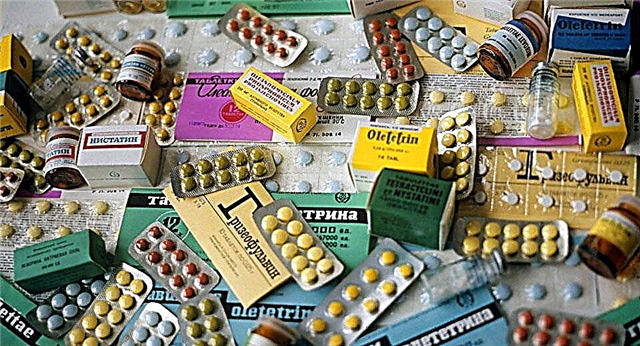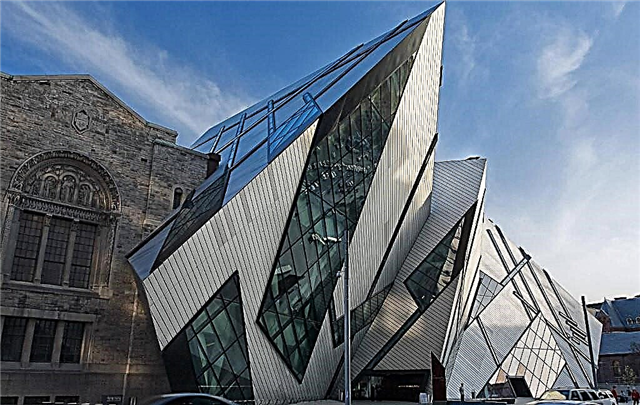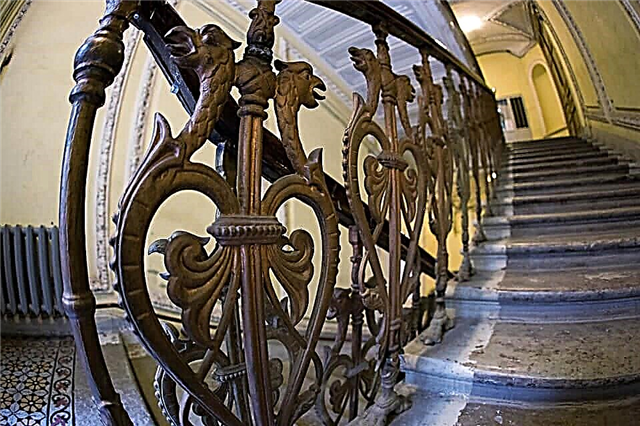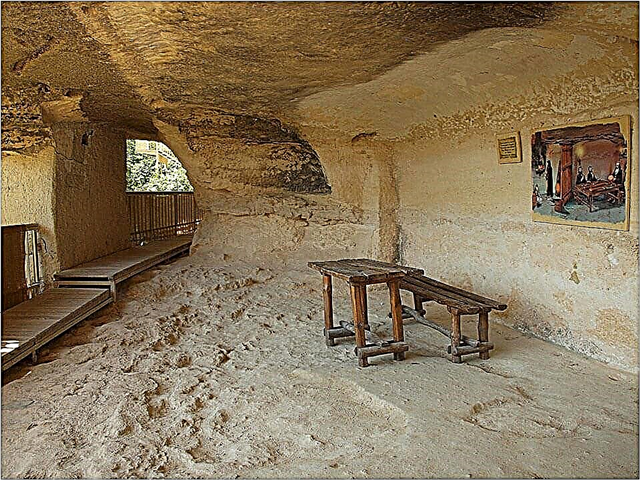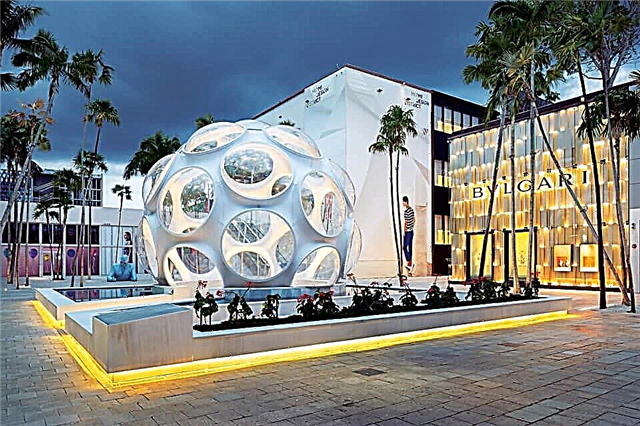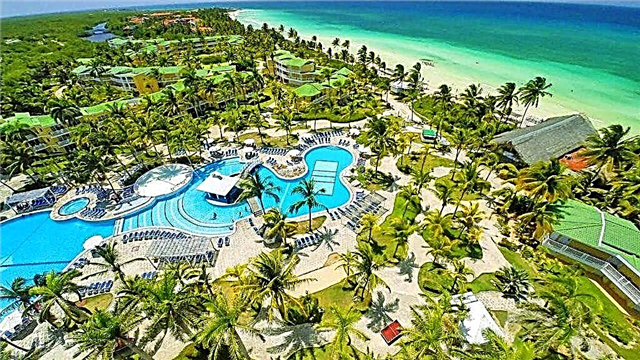Travelers who come to Kostroma mark the temple complex of St. John the Theologian as one of the best architectural monuments of the ancient city, and its wall paintings are especially striking. They are amazing in beauty and craftsmanship! Almost the entire volume of the temple is covered with frescoes - domes, vaults and walls. For pilgrims and tourists, these ancient paintings are a vivid example of the continuity of the traditions of the Kostroma school of monumental painting.
Church history
As often happened, a wooden church originally stood on the site of the stone church. Before the brick church of St. John the Theologian, two wooden churches were built in Ipatievskaya Sloboda, and the first mention of them dates back to 1562. The large tent-roofed temple was dedicated to John the Theologian. Divine services were held in it only in the summer. And nearby there was a small "kletskaya" church of St. Nicholas, used for church needs in the cold season.

General view of the Church of St. John the Theologian in Ipatievskaya Sloboda
Ipatievskaya Sloboda in those days was inhabited by "monastery people" - masons, iconographers, blacksmiths and carpenters, serving the needs of the monastery. The monastery lined them with large rent, people lived in poverty, and the craftsmen were forced to go to work in other Russian cities and even outside the province. It is known that the artels of Kostroma artists painted churches throughout Russia, and the efforts of skilled local builders erected churches in Moscow, Yaroslavl, Pereslavl-Ryazan and Novgorod.
In 1680, during a great fire, both wooden churches burned down. The next year, the parish community and Ipatiev Monastery, thanks to the efforts of Archimandrite Theodosius, raised the necessary funds and began work on the construction of a new stone church.
The construction received the blessing of Patriarch Joachim and took 6 years. Everything was done by local craftsmen, and in 1687 the temple with a small refectory was consecrated by the abbot of the Ipatiev monastery.
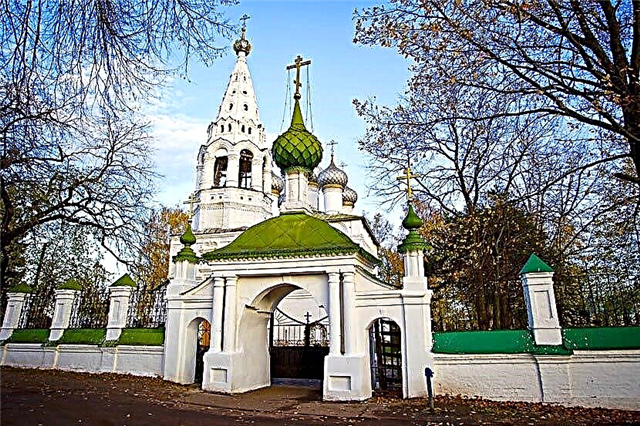
View of the Holy Gates with a fence against the background of the Church of St. John the Evangelist in Ipatievskaya Sloboda
At the beginning of the 18th century, they decided to rebuild the church. The warm chapel of St. Nicholas the Wonderworker was added to the volume of the refectory. This is how the memory of the old wooden St. Nicholas Church was immortalized. In addition, a porch was added to the building on the south side. Later, in the 1780s, another side-chapel was erected - from the south of the refectory. It was consecrated in honor of the Fedorov Icon of the Mother of God. And in the 60s of the 18th century, the church was surrounded by a stone fence with the Holy Gates, which was made in the baroque style that was fashionable at that time.
St. John the Theological Church has always enjoyed great respect and love of parishioners in the city. This is evidenced by the fact that many wealthy and famous Kostroma residents were buried in it and in the church cemetery.
In the 1920s, the new authorities renamed the Ipatievskaya Sloboda to Trudovaya. And in 1931 Trudovaya Sloboda became part of the city of Kostroma. In those years, the state waged an active struggle against religion, but the Church of St. John the Theological remained active for a long time. However, in 1949, services in it were stopped, and the religious building was transferred to the jurisdiction of the city historical and architectural museum, located on the territory of the Ipatiev monastery.

View of the temple bell tower
Due to lack of funds, for a long time they could not begin the restoration of the temple, and therefore in the 1950s it looked very neglected. In the 60s, master restorers from Kostroma, under the supervision of architects Iosif Sheftelevich Shevelev and Leonid Sergeevich Vasiliev, redesigned the refectory, giving it its original appearance, conceived by the architects. They also renewed the covering of the church domes and restored the porch. And in the 70s, thanks to the efforts of the famous architect Kaleria Gustavovna Torop, restorers restored the temple fence and gates.
The believers were able to return to the temple only in 1992. And until the time when the museum occupied the entire territory of the monastery, services for the monastic community were held in the church. At this time, the settlement was returned to its historical name. And the inhabitants of the monastery, together with the parishioners, were engaged in repair and restoration work. The church cemetery was brought into proper form, and the graves of famous Kostroma residents were arranged. As funds were found, the restoration of the church itself was carried out. And since 2005, the church again became a parish.

View of the refectory and bell tower of the church
Architecture and interior decoration
The beautiful two-pillar church was built of bricks with lime plaster. Outwardly, it is somewhat similar to the Trinity Cathedral of the Ipatiev Monastery, which appeared in Kostroma 35 years earlier. The temple has a powerful quadrangle, three altar apses and five domes, the domes of which, as in the monastery cathedral, are slightly flattened. The side domes are placed on deaf drums, and the central one, the largest in size, stands on the light one.
On the western side, the refectory adjoins the temple, and behind it is a high hipped bell tower - the vertical dominant of the entire temple ensemble. The refectory was reconstructed several times. The last time this happened was at the beginning of the 20th century. By that time, the room did not accommodate everyone who came to the church service, and therefore the volume of the refectory was greatly expanded, reconstructing the building in the then popular pseudo-Russian style. These works were supervised by the city's civil architect Ivan Vasilievich Bryukhanov.
It should be noted that the decoration of the facades of the temple is rather sparse. However, individual details, as if in contrast, stand out for the richness of the decor. These are wide blades at the corners of the building, expressive false zakomars, as well as window frames made in the tradition of lush ornamentation. The decor of the temple bell tower is also very beautiful. Arched openings of the ringing tier surround round columns and niches. And in a high tent in four rows, auditory holes are made. In addition, the bell tower is decorated with multi-colored tiles and a small cupola.

Church of St. John the Evangelist with a refectory and a bell tower
The wall paintings that occupy the entire interior space of the church are one of its main attractions. And this is not accidental, because their famous iconographers of the Ipatievskaya Sloboda, who at that time tried to invite to paint frescoes in churches in other cities, performed them. The fact that the paintings were made by local craftsmen is also evidenced by the fact that the frescoes of the St. John the Theological Church are very similar to the wall paintings of the Trinity Cathedral.
It is known that most of the frescoes were created in the summer months of 1735 by the Kostroma artel under the guidance of the famous iconographer Fyodor Loginov. The names of the artists who worked here are listed on a picturesque hallmark, which is located on the north wall of the building. Later, in the 1880s, the old frescoes were renovated.
In the main dome, under the luminous head, there is a composition dedicated to Jesus Christ, and on the eastern vault - the Trinity of the New Testament. On the western side, the isographers depicted a story about the Suffering of Christ. From the north and south, the Twelve Apostles and scenes from their lives are written in full growth.

Fragment of a mural in the Church of St. John the Evangelist
The walls of the temple in four rows are painted with gospel stories, and below they have a picturesque decorative ornament. The huge amount of work done and the professionalism of the isographers speaks in favor of the fact that Fyodor Loginov's artel worked very harmoniously, and each of the Kostroma masters thoroughly knew their job. In his younger years, Loginov worked under the guidance of the famous Russian icon painter Gury Nikitin, which speaks of the continuity of the traditions of the Russian school of wall painting.
The temple iconostasis is of great interest. His body was made at the end of the 19th century.But on the iconostasis there are many icons of earlier writing, starting from the 16th century. Most of the old images are now on display in the collections of the city's historical and architectural museum. The church also has cast iron floors made in the 18th century.

View of the domes of the Church of St. John the Evangelist
The current state of the temple and the visiting regime
The temple is active, and regular services are held in it. It has the status of a cultural and historical monument of federal significance, and everyone can get inside the church. The restoration of wall paintings is still ongoing here.
How to get there
The temple is located in Ipatievskaya Sloboda, on the street. Writer Evgeny Osetrov.
By car. The road from the capital to Kostroma takes 4.5-5 hours (346 km) and runs along the Yaroslavl highway and the M8 highway (Kholmogory). In Kostroma, cross the road bridge to the left bank of the Volga and turn onto st. Soviet. Along it, Tekstilshchikov Avenue and st. Ostrovsky should drive up to the road bridge across the Volga tributary - the Kostroma River. St. John the Theological Church is located on the right bank of the Kostroma River, and the street of the Writer Evgeny Osetrov leads to it.

Bell tower tent with a small dome
By train or bus. From the Yaroslavsky railway station in Moscow to Kostroma, trains reach in 6.04-6.35 hours. In addition, from the Central Bus Station of the capital, located near the Shchelkovskaya metro station, you can get to Kostroma by regular buses (7 trips a day). This journey takes 6.50 hours. The Kostroma bus station is 1 km away from the railway station. You can get to the temple in the city by bus No. 14, as well as by shuttle buses No. 4, 8, 11, 14, 38 (to the stop "Ipatievskaya Sloboda").
Attraction rating:

